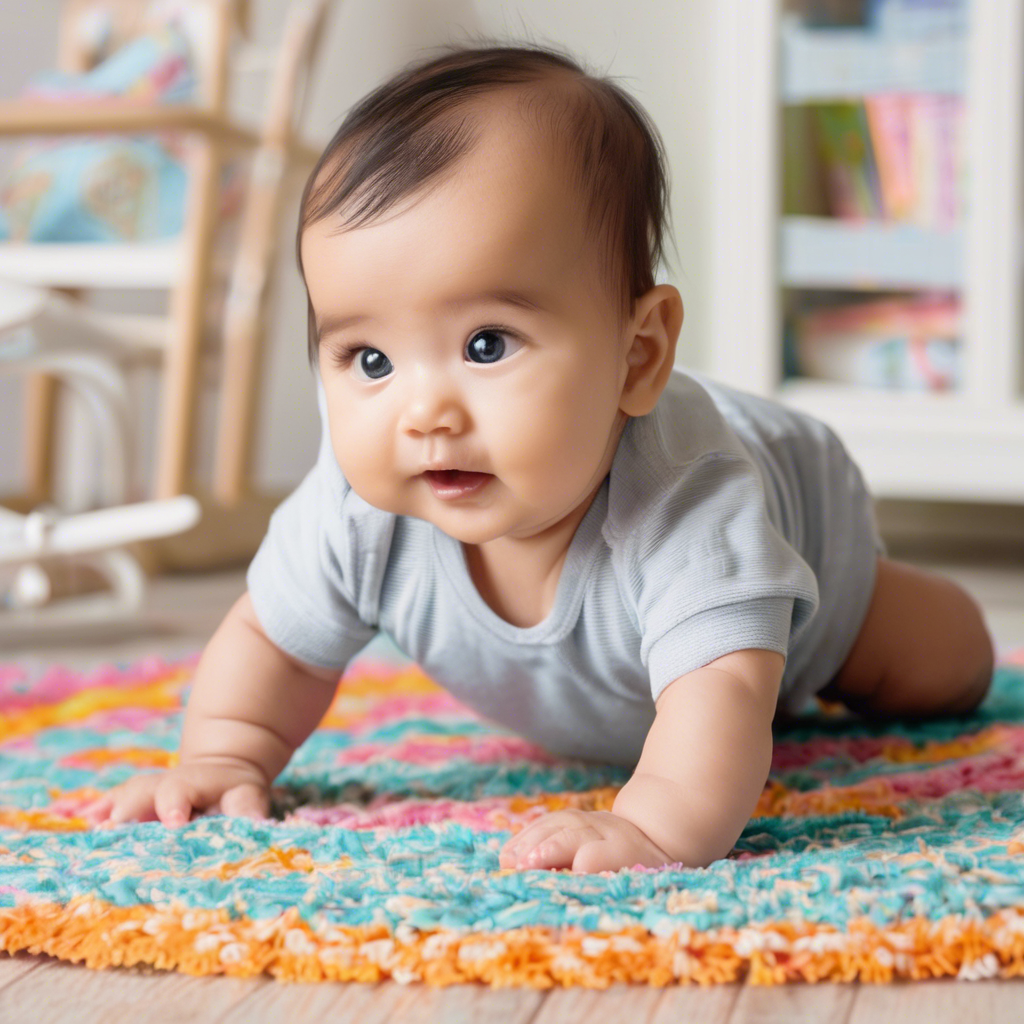Encouraging a baby to crawl and walk is a crucial part of their physical and cognitive development. Parents and caregivers play a key role in supporting these milestones by providing the right environment, stimulation, and encouragement. Babies develop at their own pace, but with proper guidance, they can strengthen their muscles, coordination, and confidence. Creating a safe and engaging space, incorporating playful activities, and using positive reinforcement can make the process enjoyable for both the baby and the parents. Understanding the stages of movement and responding to a baby’s individual needs can help them progress smoothly from crawling to walking.
Tummy time is one of the first and most effective ways to build strength for crawling. Placing a baby on their stomach for short periods throughout the day helps develop neck, shoulder, and arm muscles. It also encourages them to lift their head, push up with their arms, and eventually start reaching for objects. Making tummy time fun with toys, mirrors, and interactive play can motivate a baby to stay engaged. Parents should ensure the baby is comfortable and gradually increase the duration of tummy time as the baby builds endurance. If a baby resists tummy time, placing them on a caregiver’s chest or using a rolled-up towel under their chest can provide extra support and comfort.
Once a baby starts showing signs of mobility, setting up a safe play area can encourage movement. Creating an open and clutter-free space with soft mats, pillows, and engaging toys can motivate a baby to explore. Placing toys just out of reach encourages stretching, rolling, and scooting, which are early forms of mobility. Using colorful and textured objects that make sounds can grab a baby’s attention and spark curiosity. Avoiding restrictive devices like baby walkers and instead focusing on floor play helps build the natural strength and coordination needed for crawling and walking. Babies need to have the freedom to move and experiment with different positions, such as rocking on their hands and knees, before they start crawling.
Encouraging crawling can involve simple yet effective strategies like placing a favorite toy a few inches away from the baby or using a tunnel to create a fun obstacle course. Crawling games, such as following the leader, can make the process exciting. Parents can crawl alongside their baby, making it a shared activity that promotes bonding. Using music and clapping can also stimulate movement, as babies are naturally drawn to rhythm and sound. Allowing a baby to practice different crawling styles, such as army crawling or bear crawling, without interference helps them find their preferred way of moving. It is important to remember that some babies may skip crawling and move straight to standing or walking, which is also normal.
Transitioning from crawling to standing is a major milestone that requires leg and core strength. Babies typically start pulling themselves up using furniture or a caregiver’s hands. Providing stable, low furniture, such as a couch or a sturdy play table, gives babies something to hold onto while they practice standing. Placing interesting objects at different heights can encourage them to reach and shift their weight. Using interactive toys like push walkers or activity tables can offer additional support. However, parents should be cautious about relying too much on external aids and instead focus on natural movement. Standing practice helps a baby develop balance and confidence before taking their first steps.
Walking support can be introduced through guided assistance, such as holding a baby’s hands while they take steps or allowing them to cruise along furniture. Babies often start by holding onto walls, couches, or coffee tables as they move side to side. Placing enticing objects a short distance apart can motivate them to take independent steps. Walking barefoot on different surfaces like carpet, grass, or soft mats can improve balance and foot strength. If a baby hesitates to walk, using encouragement instead of pressure can help them feel more secure. Every baby develops at their own pace, and it is important to celebrate small progressions without rushing the process.
Developing confidence in movement is just as important as building strength. Positive reinforcement, such as clapping, cheering, and smiling, can make a baby feel encouraged. Avoiding overly cautious reactions when a baby stumbles is key, as babies learn through trial and error. Offering a hand when needed but allowing independent exploration fosters self-reliance. Playing interactive games like rolling a ball, chasing bubbles, or setting up small obstacle courses can make walking practice enjoyable. Encouraging social play with other babies can also inspire movement, as babies often mimic what they see.
Nutrition and overall health play a role in physical development. A well-balanced diet with essential vitamins and minerals supports muscle growth and energy levels. Ensuring a baby gets enough sleep is equally important, as rest is crucial for muscle recovery and cognitive development. Keeping a baby hydrated and allowing plenty of active playtime throughout the day can prevent fatigue and keep them engaged in movement. Regular pediatric check-ups can help monitor progress and address any concerns regarding motor development. If a baby shows signs of delay, consulting a pediatrician or a physical therapist can provide guidance on appropriate exercises and interventions.
The journey from crawling to walking is a unique experience for every baby. Some may take their first steps as early as nine months, while others may not walk until 15 months or later. Genetics, personality, and environment all influence the timeline. Being patient and supportive throughout the process allows a baby to develop at their own speed without unnecessary pressure. Encouraging a baby to move through fun, engaging activities while ensuring safety creates a positive and stress-free learning experience.
Celebrating milestones, no matter how small, can make the journey even more rewarding. Whether it is a baby’s first attempt at crawling, pulling up to stand, or taking wobbly first steps, each achievement is a sign of progress. Documenting these moments through photos or videos can create lasting memories. Encouraging independence, fostering curiosity, and providing a supportive environment can set the foundation for a lifetime of healthy movement and exploration.

